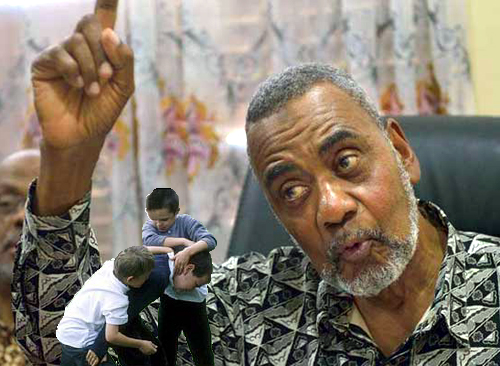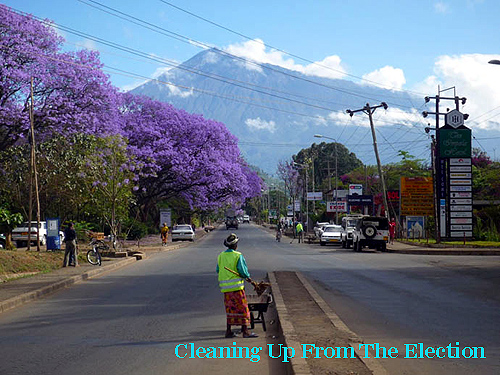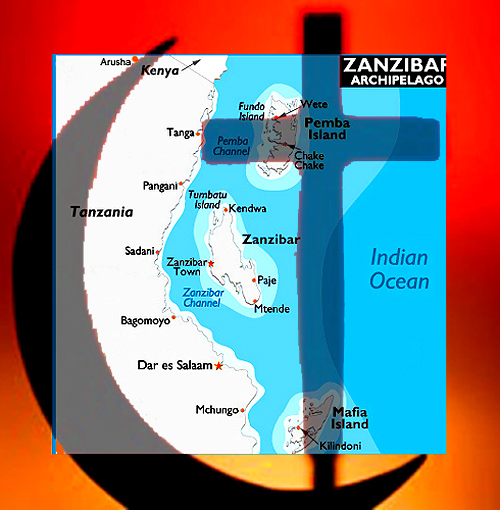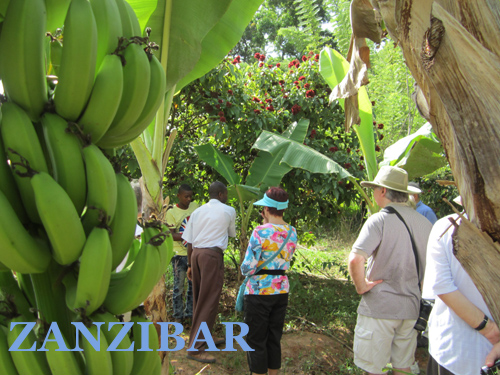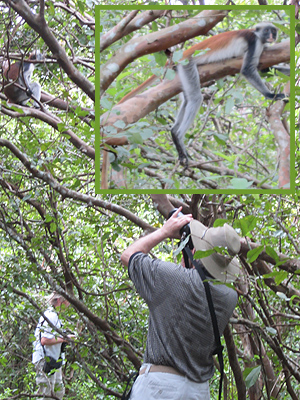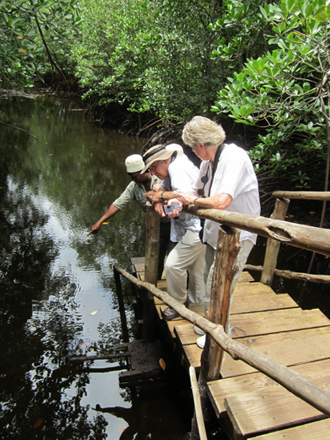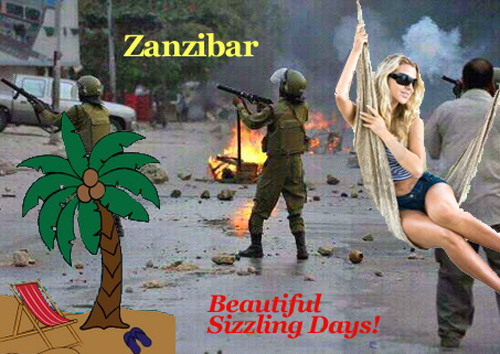 Last night Pres. Obama and Gov. Romney argued whether al-Qaeda was on the run. It is, and it’s central to why Zanzibar is exploding, now.
Last night Pres. Obama and Gov. Romney argued whether al-Qaeda was on the run. It is, and it’s central to why Zanzibar is exploding, now.
Yesterday tear gas filled Stone Town as mostly young radicals protested the indictment of a popular extremist sheik who was then held without bail.
The unrest in Zanzibar began last week. There was also significant violence in mainland Tanzania’s largest city, Dar-es-Salaam. Many media reports claimed this was Zanzibar’s “Arab Spring.”
It’s not. Unlike in northern Africa these demonstrations will not succeed in toppling the Tanzanian government. Also unlike in northern Africa, the vast majority of Tanzanians are critical of the Islamic violence.
Mainland Tanzania has shackled Zanzibar ever since the federation in 1964 and most Tanzanians look down on Zanzibaris. This has not been a helpful attitude, in the past and especially now as unrest grows on the island. Be that as it may, the significant point is that mainland Tanzanians are in the vast majority.
But there could be a period now measured in months of unrest not significant enough to stop tourists coming to see lions but enough to seriously effect the beach business. This is because the trouble that’s brewing is on the coast.
And that’s because the coast is where East Africa’s Muslim population is, and much of it has been highly radicalized over just the last few years.
Americans who think of East Africa as big game country don’t understand that more than half of the tourists to East Africa never see an animal larger than a monkey. The extraordinarily beautiful coral coast which extends virtually all the way south of Somalia through Mozambique is East Africa’s real tourist treasure, not wild animals.
Europeans especially use East Africa the same way Americans use the Caribbean, for sun ‘n sand vacations, usually of a week long, and usually transported by charter aircraft that practically land next to your beach view hotel room. There you stay, vegging out on margaritas and reggae bands.
Trouble on the coast is not new. In November, 2002, the Israeli Paradise Beach Hotel was mostly destroyed by a terrorist bomb and a ground-to-air missile narrowly missed an El Al jumbo jet taking off from Mombasa, Kenya.
There has been nothing as dramatic until this year. There had been numerous incidents of small grenade bombs in local bars and several incidents of tourist harassment in the last decade. But none of these critically dissuaded tourists from flooding to Kenya’s beaches almost exclusively from Europe.
But all that changed with the successful Kenyan invasion of Somali just to the north of Kenya. As Kenyan soldiers routed Somali terrorists, the coast began to heat up in much more generic ways that has seriously effected tourism. Tourists were kidnaped and publicly ransomed by terrorists, and virtually all the main beach hotels began to institute extremely strict security procedures.
Then last month, just as the Kenyan forces were about to oust al-Shabaab (al-Qaeda in Somali) from its last great stronghold of Kismayo, all sorts of political turbulence erupted in both Mombasa in Kenya and Zanzibar in Tanzania.
It struck me as an obvious consequence of the successful military action in Somalia. Rebels were running for cover, and the East Africa coast with its radical Muslims provides that, and what assets and hardware they could run with began funneling through East Africa.
Kenya is in the thralls of the last legislation implementing its new constitution before March elections. Suddenly there was a newly reborn political movement in Mombasa that called itself the Mombasa Republican Congress. Its agenda was nothing less than independence from Kenya.
The independent movement in Zanzibar which has been a perennial cause every since federation with the mainland in 1964, suddenly blossomed with new and fancy leaflets, new cars for its leaders and new megaphones for its Friday prayers.
While ostensibly completely separate political movements, the timing of both the emergence of the MRC and the makeover of the Zanzibar autonomy movement struck me as anything but coincidental. Money, methods and Islamic madness was coming from the north.
And then the tinderbox exploded in both Kenya and Zanzibar. Last month the principal radical cleric was killed in a car drive-by gangster-like shooting. And last week, Tanzanian police started rounding up radical clerics. Each incident, though separated by nearly a month, resulted in violent protests.
As I write this blog today Mombasa is calm following the Kenyan government’s very tough actions which involved dozens of arrests and the closing of theoretically unregistered Muslim organizations. The Kenyan President charged Mombasa radicals to “surrender or face arrest.”
But Zanzibar is not calm, today, and depending very much upon what the Tanzanian government now does with its radical Muslims, it may not be calm for a long while. And now what happens in one place is likely to effect the other.
As far as I can see, which is all along the exquisitely beautiful coral coast from Somali to the Mozambique border, this outstanding Indian Ocean venue won’t be a place to vegge out for some time.
When and will all of this calm down?
It depends upon how quickly the Somali mop-up occurs, how peacefully and completely the March Kenyan elections go, and how placated Zanzibari successionists will feel as Tanzania flirts with the idea of a new constitution.
March is the key date. After the March 4 Kenyan elections we’ll have a much clearer picture on which to predict what the coast will look like over the next year.
Until then. Leave your flippers at home. Concentrate on the binocs.
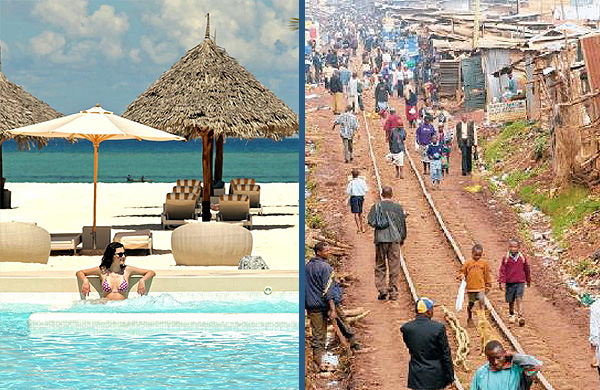 I can wallow under a giant rain shower or soak in a bathtub even larger than the 19th Century four-claw tub at my home.
I can wallow under a giant rain shower or soak in a bathtub even larger than the 19th Century four-claw tub at my home. Autonomy is the buzzword, now. The Navajo Nation, Catalonia, Maasai Ngorongoro, Yukon First Nations or Zanzibar, and they are all wrong. This is becoming clearer and clearer to me as I tour America’s southwest and listen to the same story lines and their dismal outcomes that I have heard in Tanzania for years.
Autonomy is the buzzword, now. The Navajo Nation, Catalonia, Maasai Ngorongoro, Yukon First Nations or Zanzibar, and they are all wrong. This is becoming clearer and clearer to me as I tour America’s southwest and listen to the same story lines and their dismal outcomes that I have heard in Tanzania for years. I wish everyone I know could have been with us in Zanzibar. The troubles in the world are like flotsam in a still lake: just when you think you see an object it dissolves into murk. In Zanzibar we experienced one small puddle of clarity: the hatred between the Shia and Suni.
I wish everyone I know could have been with us in Zanzibar. The troubles in the world are like flotsam in a still lake: just when you think you see an object it dissolves into murk. In Zanzibar we experienced one small puddle of clarity: the hatred between the Shia and Suni.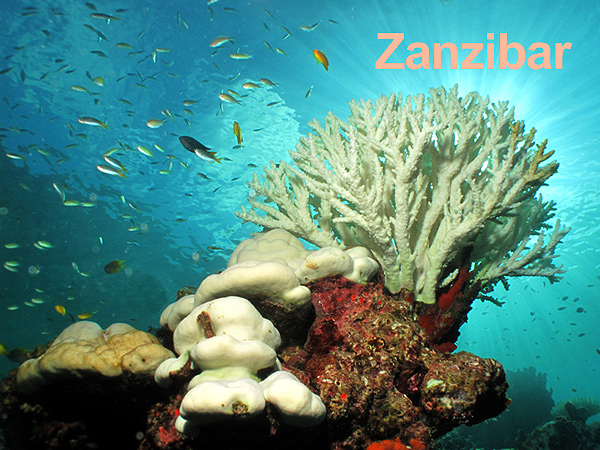 It was a splendid morning in Stone Town with calm winds and few clouds that might be suggesting the monsoon is changing and the farmers will soon have rain.
It was a splendid morning in Stone Town with calm winds and few clouds that might be suggesting the monsoon is changing and the farmers will soon have rain.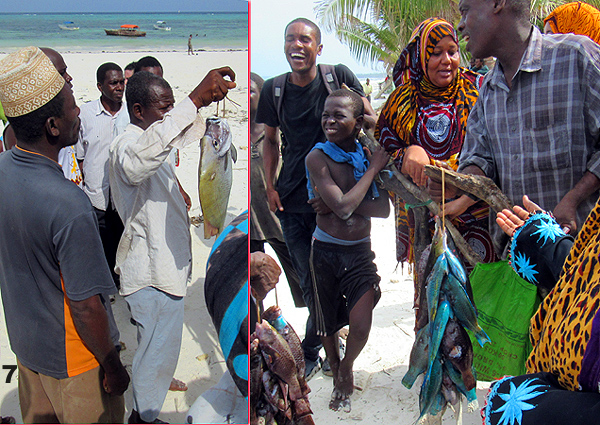 Few vocations worldwide are as threatened as that of the fisherman. I’ve seen it with Lobster fishermen in Nova Scotia, cod fishermen in Boston, salmon fishermen in Alaska and today the fishermen of Matemwe, Zanzibar.
Few vocations worldwide are as threatened as that of the fisherman. I’ve seen it with Lobster fishermen in Nova Scotia, cod fishermen in Boston, salmon fishermen in Alaska and today the fishermen of Matemwe, Zanzibar.